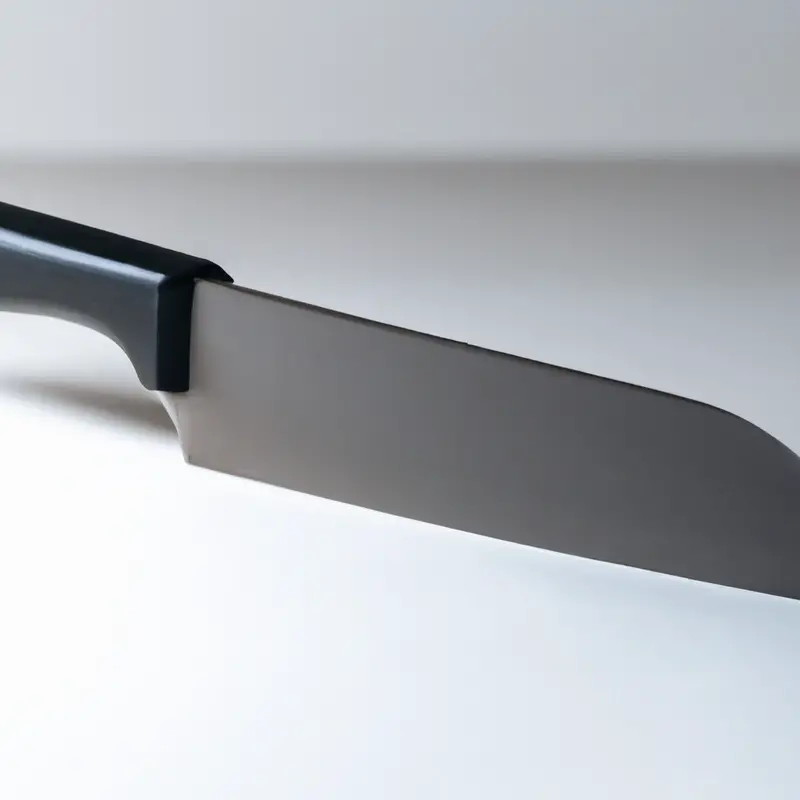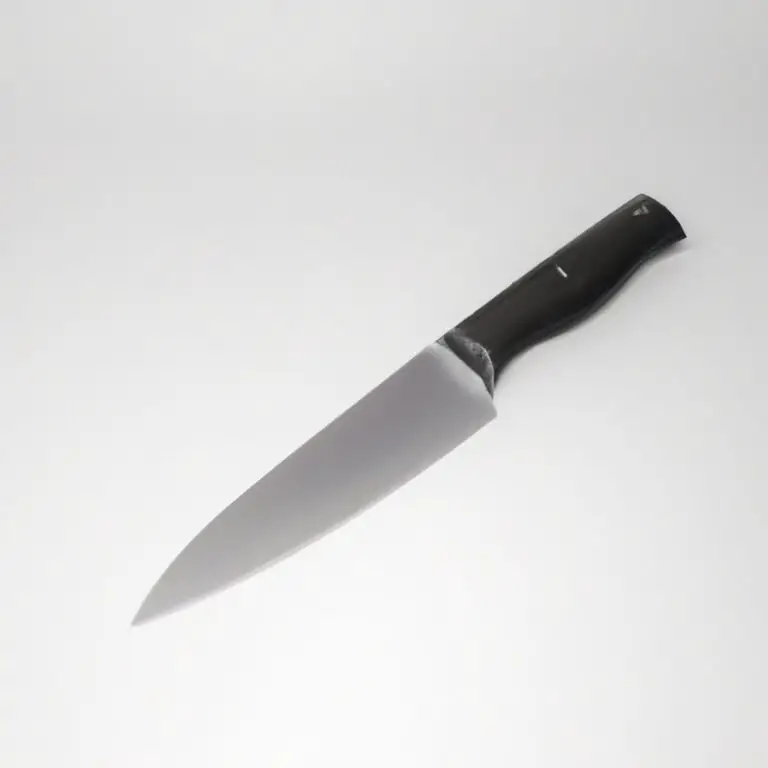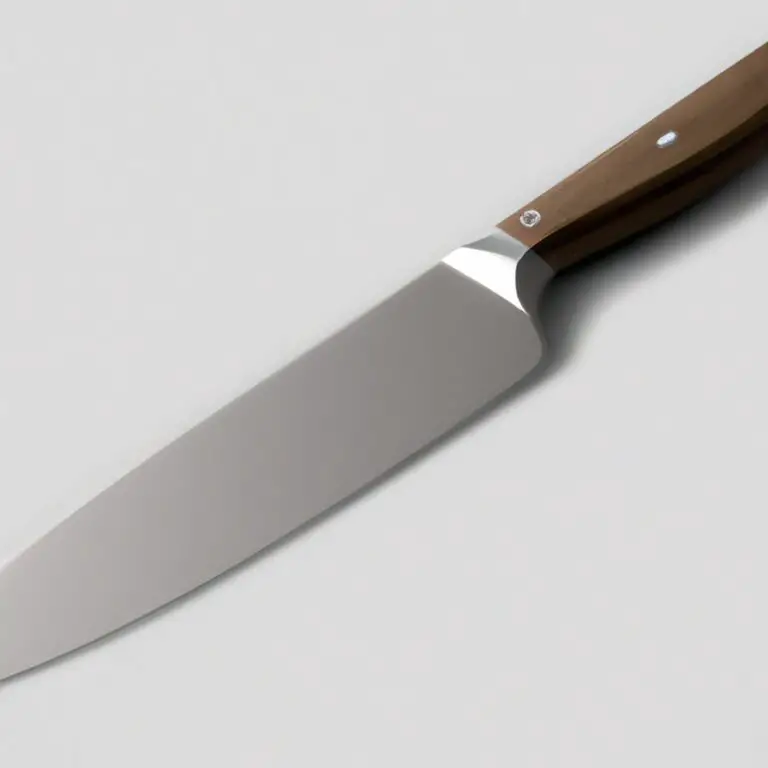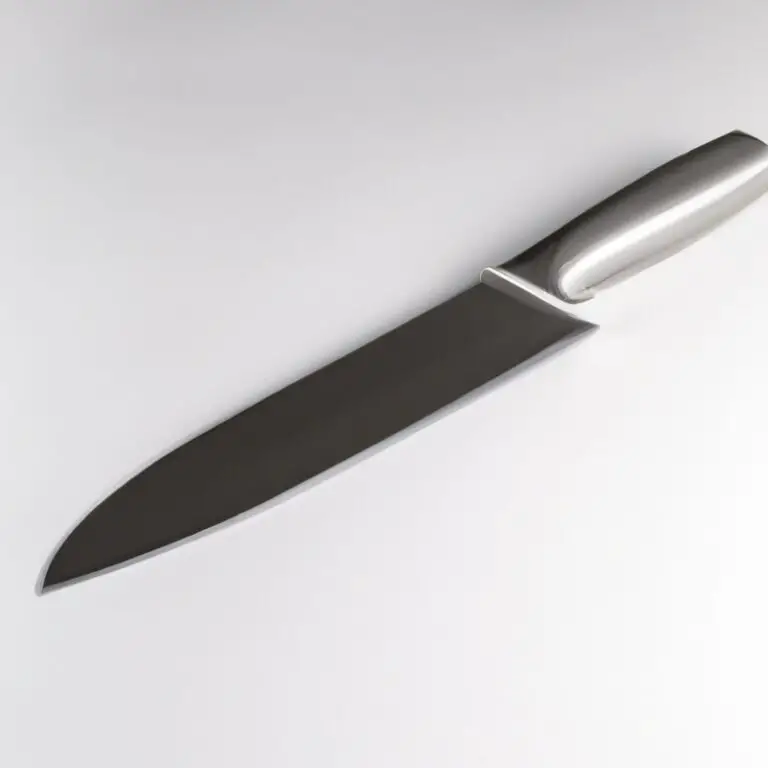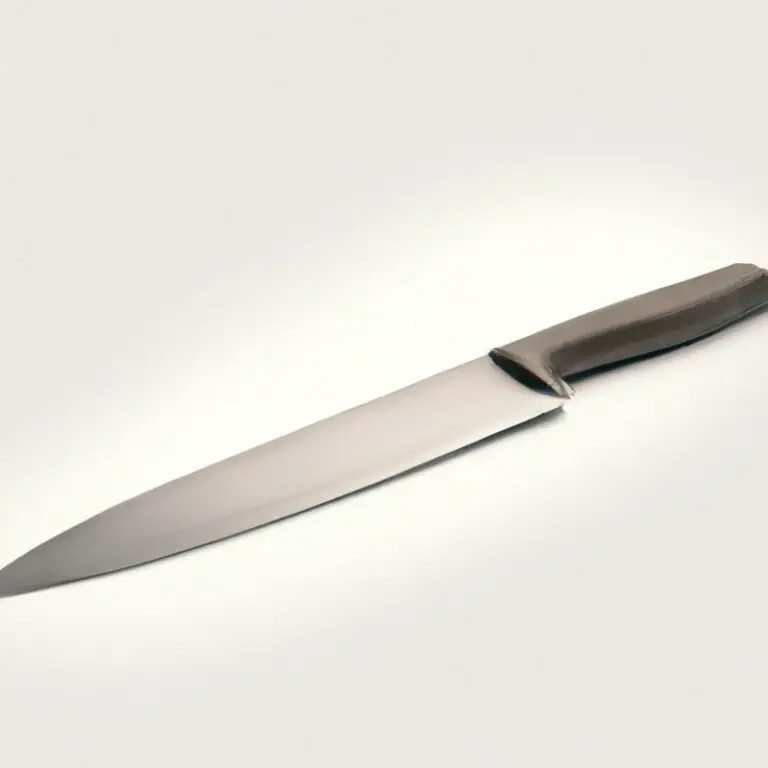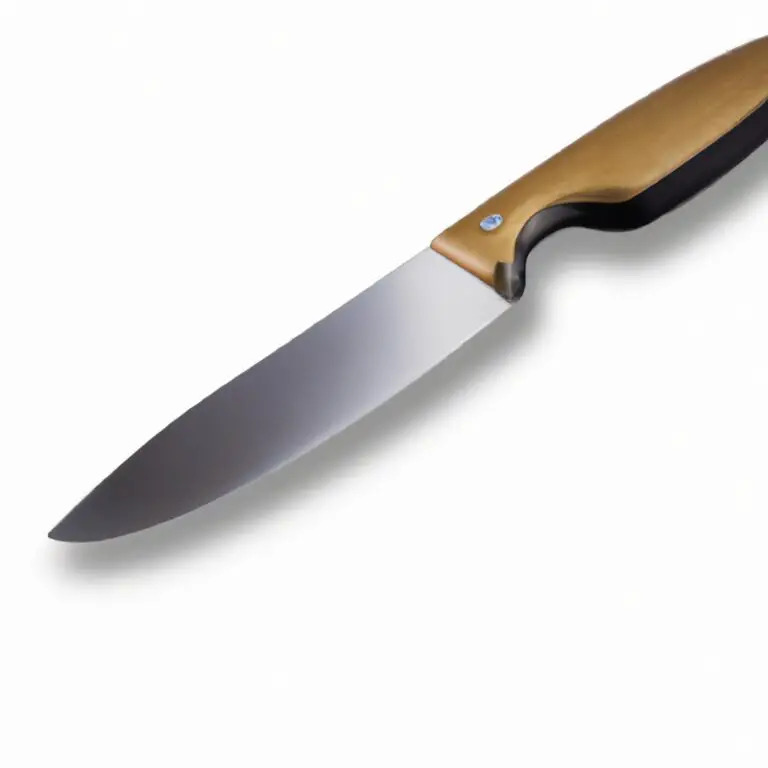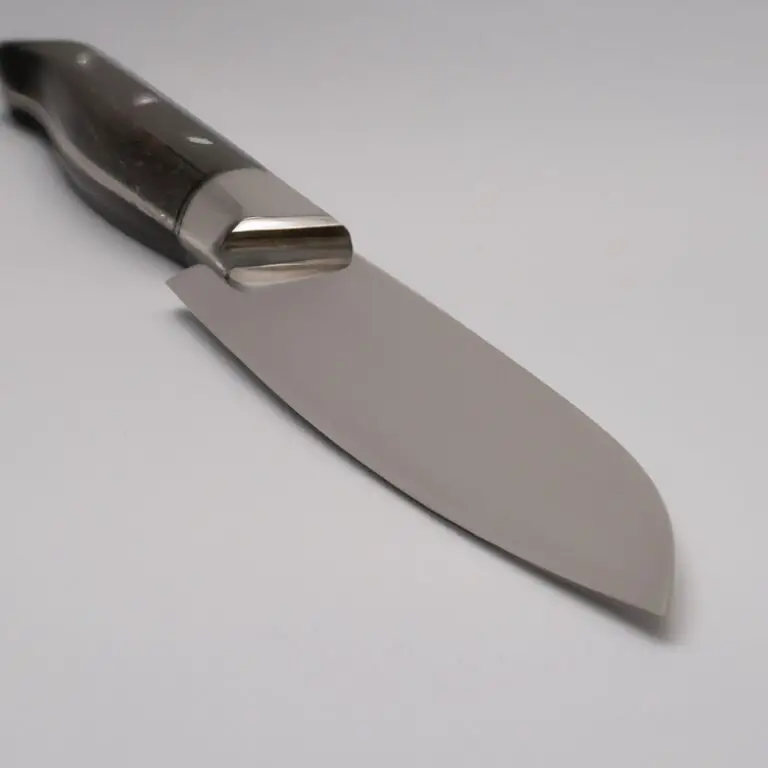How To Protect The Tip Of a Chef Knife?
Key Takeaways:
- Use a protective sheath or blade cover to store and transport your chef knife securely and prevent damage to its tip.
- Develop proper cutting techniques to avoid striking the cutting board with the tip of the knife and wear a cut-resistant glove for added protection.
- Regularly sharpen your chef knife with a honing rod or whetstone to maintain its optimal sharpness and prevent the tip from bending or breaking.
- Invest in a high-quality chef knife made with durable and reliable materials, as cheaper knives may be more prone to damage and require more frequent maintenance.
As a chef, your knife is your most vital tool in the kitchen, and the tip is its most delicate part. A sharp and undamaged tip ensures precise cuts and optimal performance, while a damaged one can be frustrating and even dangerous.
So, how do you protect the tip of your chef knife?
In this article, I will share my expertise on the anatomy of a knife tip, the different types of protectors, and the best ways to store, handle, and maintain your chef knife to avoid tip damage. Let’s get started and keep your top chef knife at its best!
| Method | Description |
|---|---|
| Knife Guards | A plastic or silicone guard that slips onto the tip of the knife to protect it from damage and prevent accidental cuts. It can be purchased in different sizes to fit different knives. |
| Blade Covers | A blade cover is designed to cover the entire blade of a knife, including the tip. It is a good option for storing knives in a drawer or for transportation. |
| Magnetic Knife Racks | Using a magnetic strip to hold knives is a great way to keep them organized while also protecting the blade tips. The tips of the knives will be suspended in the air, preventing them from making contact with other objects or knives. |
| Knife Blocks | A knife block is a traditional way to store knives. It usually has slots for the blades to fit into, keeping them organized and safe from damage. It is important to make sure the slots are long enough to accommodate the entire blade, including the tip. |
Understanding the anatomy of a chef knife tip: A guide for beginners
The tip of a chef knife is the tapered, pointed end of the blade. Understanding the anatomy of the chef knife tip is essential for beginners to ensure optimal performance and longevity of their knife.
The tip can be categorized into four types: pointed, round, squared, and blunt.
Each tip type serves different purposes for cutting or slicing different ingredients. A pointed tip is ideal for precise and intricate cuts, while a round or squared tip is best for chopping and dicing.
A blunt tip is suitable for tasks that require forceful cutting such as breaking down poultry or removing bones.
Knowing what type of tip you have and its capabilities can aid in choosing the right cutting technique and tip protector. By grasping these crucial points, beginners can ensure proper utilization and protection of their chef knife tip, facilitating an optimal kitchen experience.
Why protecting the tip of your chef knife is essential for optimal performance
Protecting the tip of your chef knife is essential for optimal performance for several reasons. First, the tip is the most delicate and vulnerable part of the knife, and it can easily bend or break if not handled properly.
Second, a damaged tip can affect the knife’s balance, making it difficult to use and reducing its efficiency.
Third, a damaged tip can affect the knife’s ability to make precise cuts, compromising the quality and appearance of your dishes. Therefore, protecting the tip of your chef knife is crucial for maintaining its performance, durability, and overall quality.
Getting to know the different types of knife tip protectors and their uses
There are various types of knife tip protectors available in the market. Here are some of the most common ones:
- Blade guards: These are commonly made of plastic or silicone, and they slip on the blade to protect the tip during storage. They are inexpensive and come in different lengths to fit different blade sizes.
- Edge protectors: These are designed to fit over the entire blade and come in different shapes and sizes. They are perfect for protecting the tip during transport, and many are made of soft, flexible materials to prevent scratching.
- Magnetic guards: These attach to the sides of the blade using magnets and provide excellent protection for the tip. They are easy to remove and come in different sizes to fit various blade lengths.
- Pinch guards: Also known as finger guards, these fit over the part of the blade near the tip and prevent the user’s fingers from accidentally sliding up onto the sharp edge during use. They are often included with new knives and can also be purchased separately.
- Sheaths: A knife sheath is a cover designed to fit over the blade, and It protects the entire knife and comes in many shapes and sizes. Some are made of leather, while others are made of plastic or nylon.
When choosing a knife tip protector, consider the size and shape of your knife, as well as where and how you plan to store or transport it. Each type of protector serves a different purpose, and various factors should be considered, such as convenience, durability, and protection levels.
Ultimately, using a knife tip protector is an excellent way to extend the life of your knife and ensure it performs optimally for years to come.
How to choose the right tip protector for your chef knife: factors to consider
When choosing a tip protector for your chef knife, there are several factors to consider. Firstly, the material of the tip protector should be compatible with the material of your knife blade.
For example, if your blade is made of carbon steel, a plastic tip protector could react negatively with the blade and cause damage over time.
Secondly, the fit of the protector should be snug but not tight, as a tight protector can bend or damage the delicate tip of the knife. Thirdly, the shape of the protector should match the shape of the tip to ensure complete coverage and protection.
Finally, consider the type of storage you’ll be using – if storing your knives horizontally, a tip protector with a flat design would be more practical, while a rounded protector would be better suited for vertical storage.
By considering these factors, you can choose the right tip protector to protect your chef knife and keep it in optimal condition.
Tips for proper knife storage to avoid damage to the tip
Proper knife storage is crucial to avoid damaging the tip of your chef knife. Here are some tips to keep in mind:
- Use a designated storage solution: Invest in a knife block or magnetic strip to keep your chef knife safely stored in a designated space.
- Avoid overcrowding: Make sure your chef knife isn’t crammed in with other utensils or kitchenware. This can cause the tip to bend or become dull over time.
- Don’t store your knife wet: Always make sure your knife is completely dry before putting it away. Moisture can cause rust and other damage to the blade and tip.
- Avoid storing in a drawer: Storing your chef knife in a drawer can lead to it rubbing against other utensils, causing damage to the tip.
- Use a protective sheath: Consider using a protective sheath or blade guard to keep your chef knife’s tip safe during storage and transportation.
By following these simple storage tips, you can help keep your chef knife’s tip in top condition for years to come.
Best practices for handling, cleaning, and maintaining the tip of your chef knife
Best Practices for Handling, Cleaning, and Maintaining the Tip of Your Chef Knife:
- Hold the knife by the handle and avoid gripping the blade.
- Avoid cutting on hard surfaces like stone or glass and use a cutting board instead.
- Wash your knife blade with soap and warm water immediately after use and dry it thoroughly to prevent rusting.
- Sharpen your knife regularly to maintain its sharpness and prevent mishaps caused by dull blades.
- Store your knife properly, using a sheath or blade guard to prevent accidental nicks and chips.
- Never put your knife in the dishwasher or soak it for extended periods as it can cause corrosion.
By following these best practices, you can ensure that your chef knife remains in top condition, allowing you to achieve optimal performance and ensure your safety in the kitchen.
Common mistakes to avoid when protecting the tip of your chef knife
Avoid the following mistakes when protecting the tip of your chef knife:
- Using inappropriate or ill-fitting knife sheaths or covers that may cause damage to the tip.
- Placing the knife in a crowded drawer or leaving it unprotected on the counter, leading to accidental hits or damage.
- Ignoring regular cleaning and maintenance of your knife, which can lead to rust and corrosion, weakening the tip over time.
- Using improper cutting techniques, such as twisting or prying, that can cause the tip to bend or break off.
- Grinding or sharpening the tip excessively, leading to a weaker and more fragile edge.
By avoiding these common mistakes, you can ensure optimal performance, longevity, and safety of your chef knife.
Combining tip protection and sharpening techniques for long-lasting knife performance
To ensure long-lasting knife performance, it’s important to combine tip protection and sharpening techniques. Using a tip protector helps prevent damage to the tip of the knife, while regular sharpening ensures the blade remains sharp and effective.
When sharpening, it’s important to maintain the original angle of the blade’s edge.
Using a honing steel can help keep the edge straight and sharp. Avoid sharpening too often, as it can damage the blade and shorten its lifespan.
With proper tip protection and sharpening techniques, your chef knife can last for years and perform optimally.
How to troubleshoot common tip damage issues and fix them
If you notice some damage to your chef knife tip, there are a few ways you can troubleshoot and fix it.
- If the tip is bent or misaligned, gently straighten it back into place or take it to a professional for repair.
- If there are chips or nicks, use a sharpening stone to grind down the damaged area.
- If the tip is broken, you may need to reshape it entirely or have it professionally repaired.
Remember to be cautious when handling a damaged tip, and always prioritize safety.
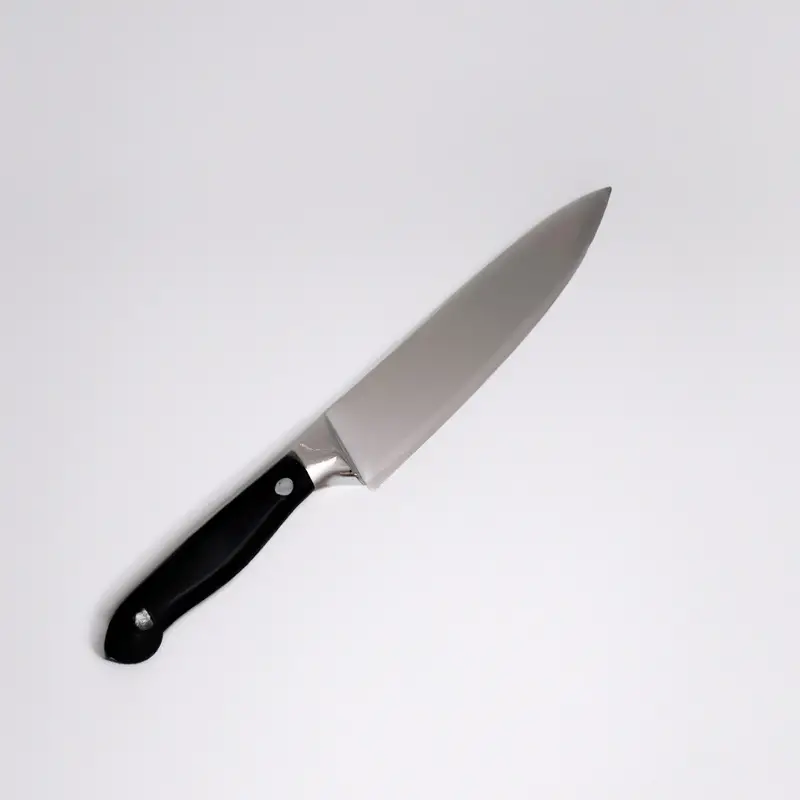
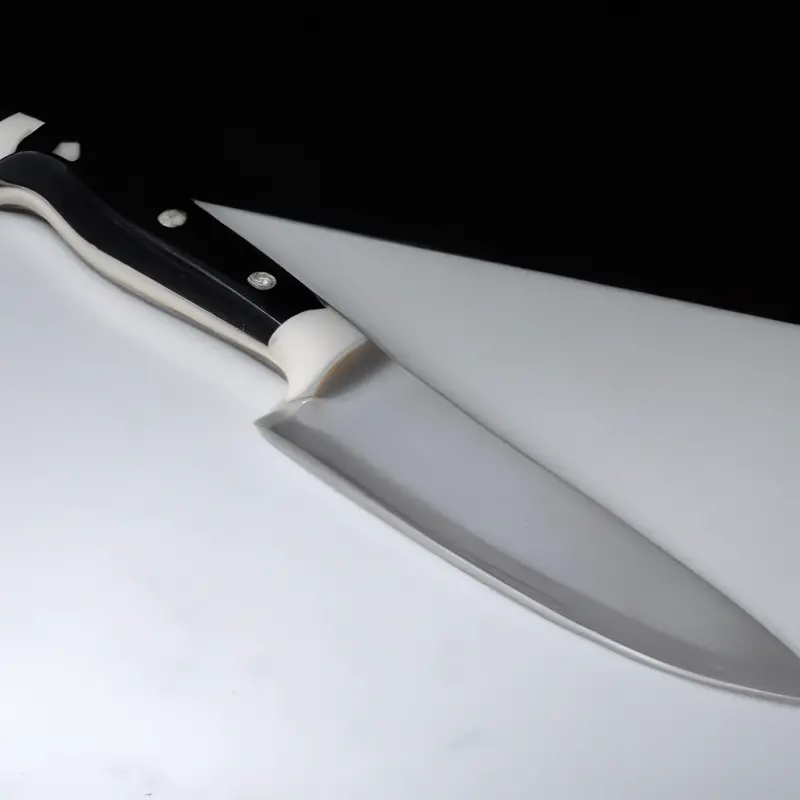
Exploring alternative ways to protect your chef knife tip beyond traditional protectors
Aside from using traditional knife-tip protectors, there are other solutions to keep your chef knife tip in good condition. One of the simplest ways is to use a cloth or paper towel as a makeshift protector before putting it in storage.
Another alternative is to use a magnetic strip to hold your knives securely in place without touching each other.
You may also opt for a knife block that has separate slots for each knife to prevent them from bumping into one another. Sharpening regularly and honing your knife regularly can also help maintain the tip’s sharpness, reducing the need for extra protection.
Additionally, using a cutting board made of softer materials, such as plastic or wood, can reduce the impact on the tip and help prolong its life.
Lastly, handling your knife with care and avoiding unnecessary roughness or force can reduce the likelihood of damage. Remember to use your knife for its intended purpose and avoid using it as a can opener or screwdriver.
By taking these extra precautions, you can keep your chef knife tip protected and functional for years to come.
Final Verdict
Protecting the tip of your chef knife is crucial for optimal performance and longevity. By understanding the anatomy of the knife tip and getting to know the different types of protectors available, you can choose the right one that suits your needs.
Proper storage, handling, and maintenance of your chef knife also play a vital role in preventing tip damage.
As with any tool, mistakes may happen, but with the right techniques, troubleshooting and alternative ways to protect the tip, you can ensure your knife stays sharp and effective for a long time. Remember to choose reliable and high-quality products and to avoid taking shortcuts when it comes to kitchen safety and knife care.
By taking good care of your chef knife, you not only enhance your cooking experience, but you also show respect for the craft and the people who use it.
Protecting the tip of your chef knife is not only an essential practice, but it’s also a way of life for any serious cook.

